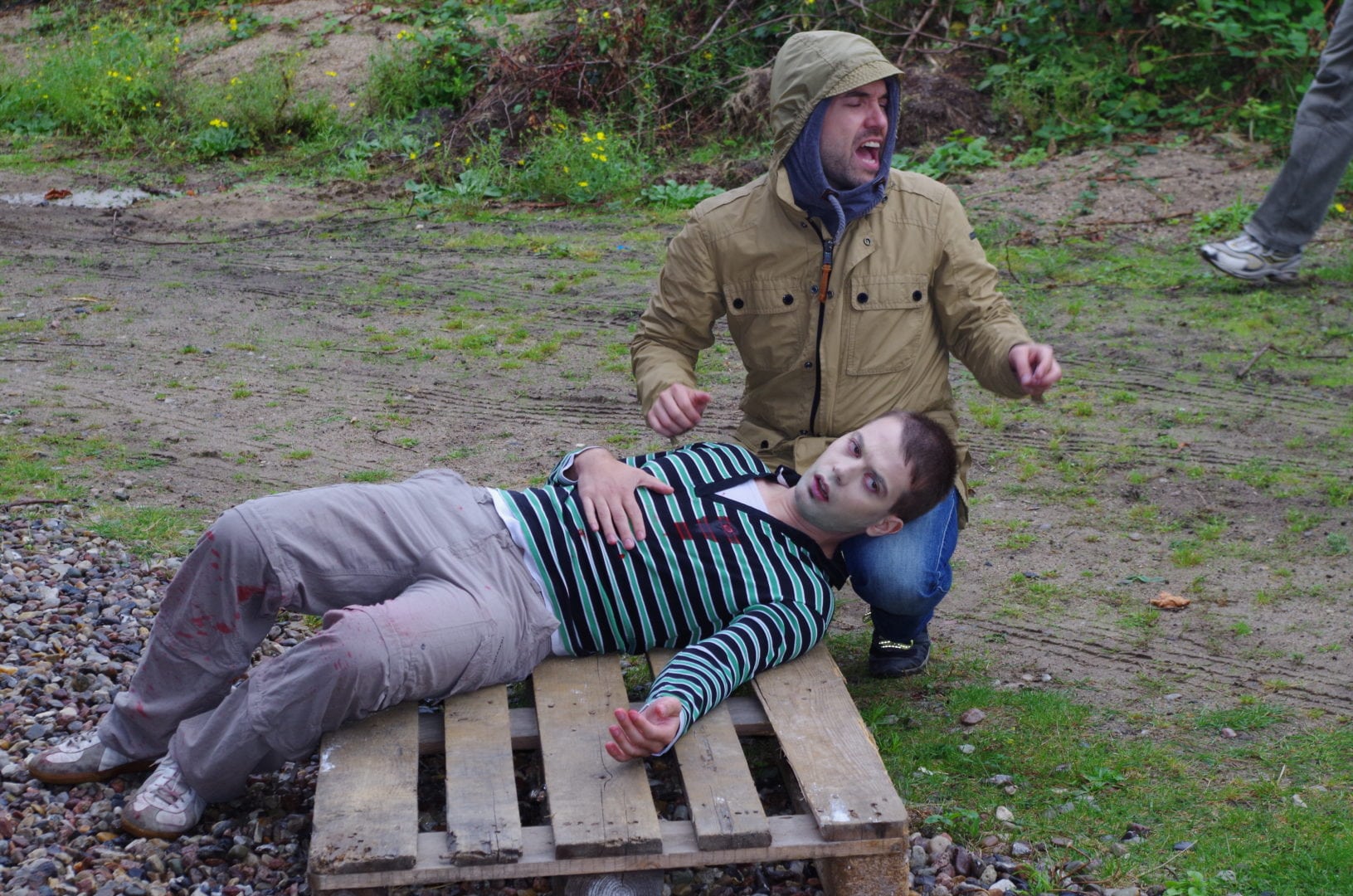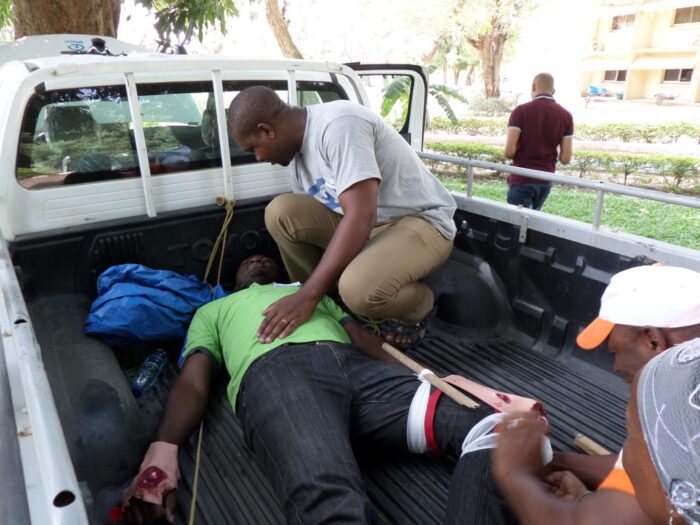Dilemmas of a HEAT training professional, to CPR or not to CPR?
It is a question that pop-ups regularly in our HEAT (Hostile Environment Awareness Training) courses, why do you not teach us CPR?
This is a valid question and this issue is a dilemma for us.
Update:
This blog was written in 2018. A few months ago we discussed these topics with our clients. In the past years, the situation in the field has changed and more AEDs are available.
This outcome of the discussion resulted in an updated medical curriculum. We have added the module Basic Life Support. This module focuses on CPR and the use of an AED. The participants learn the theoretical knowledge and practical skills needed in case of a medical emergency. We use dummies and training AEDs to make sure the participants can react in an effective way and enhance the chance of survival of the victim. The dilemma is solved and these topics are now an integrated part of the Basic HEAT training.
What is CPR?
Let us start with the basics, what is CPR? CPR stands for Cardiopulmonary Resuscitation. In non-medical terms, it means this is a method to restart a heart that has stopped beating, also known as cardiac arrest, in order to get the blood flowing (again) to the brain. The method is used to bridge the time needed for professional medical services to arrive. Using their equipment the heart of the patient can be reset.
Apart from the technical side, how many compressions, intervals, etc, I would like to get to the dilemma of performing the method in the first place.
The advantage of teaching CPR is threefold
First; humans are social beings. If a colleague or a stranger collapses on the street, most people feel they have to do something. You want to act and help this fellow human, as well as your skills, allow you to do.
Even if CPR fails and the patient does not survive, the knowledge that you “did something” can help you process the event and come to terms with this fatal incident.
This might sounds treehuggerish to some but I think psychological wellbeing can easily be underrated.
Secondly, there is a rise of medical devices called Automated External Defibrillators (AEDs). I guess you have seen these devices at your supermarket, libraries, school, etc. The usage and distribution of these devices are on the rise. I think in the future you will also find these devices in field offices and cars used by our participants. CPR suddenly makes more sense as you now have access to this medical equipment to restart a heart yourself. Disclaimer, only in 50% of the cardiac arrest causes using this device will restart the heart.
Thirdly, our participants are not always residing in the field but also at home or stationed at their home office. Medical help is most likely closer by and CPR might be useful when present in those locations.
What are the arguments against teaching our participants CPR?
CPR is, to put it bluntly, hard work. Most people will not be able to perform CPR for more than a few minutes. Within these minutes medical assistance must arrive with equipment to reset the heart of the patient. CPR is only a method to buy time to get the patient attached to professional equipment.
In the Netherlands, a country with a high level of medical care, two ambulances are always deployed to make sure enough medical staff is on-site if a patient is in cardiac arrest. This enables them to deal with fatigue and with the complexity of the medical procedures.
The time it takes an ambulance to reach the patient in the Netherlands is around 15 minutes. This implies that you have to perform CPR for 15 minutes before the professionals take over. This is already a long time to perform CPR.
The outcome of the CPR method is also not very favorable. In movies, CPR is successful in 75% of the cases. In reality and in optimal circumstances the survival rate of a patient is around 10%.
How does CPR work in field conditions?
Ok, let us now project these restraints on the area of operations of our participants. Although many do travel to more urban areas, most of them will go to the field. They travel to countries like Kenya, Somalia or Afghanistan.
The distance to a hospital can be, measured in time, multiple hours if not more. Even in cities, it is not guaranteed that an ambulance will reach you in time (or has skilled medical staff that is able to help).
Will you be able to perform CPR for several hours? This is not likely. After several minutes of performing CPR the quality of the method will already decrease due to fatigue. Also the chance of brain damage will increase as time progresses.
In our HEAT training courses, we have limited time. This means that the topics of the course have to be effective and have real-world impact. CPR is not one of them at the moment.
Conclusion
The dilemma concerning CPR is complex and has different sides with valid points. The issue of integrating CPR into our HEAT training courses will be an ongoing internal debate.
I think as time progresses, CPR might be integrated into our courses in the future. Mostly due to the expected increase and availability of AEDs in remote locations. If you have easy access to these devices in the field, it suddenly makes more sense to perform CPR. In that case, it might help to save the lives of our participants and their colleagues in remote locations.

